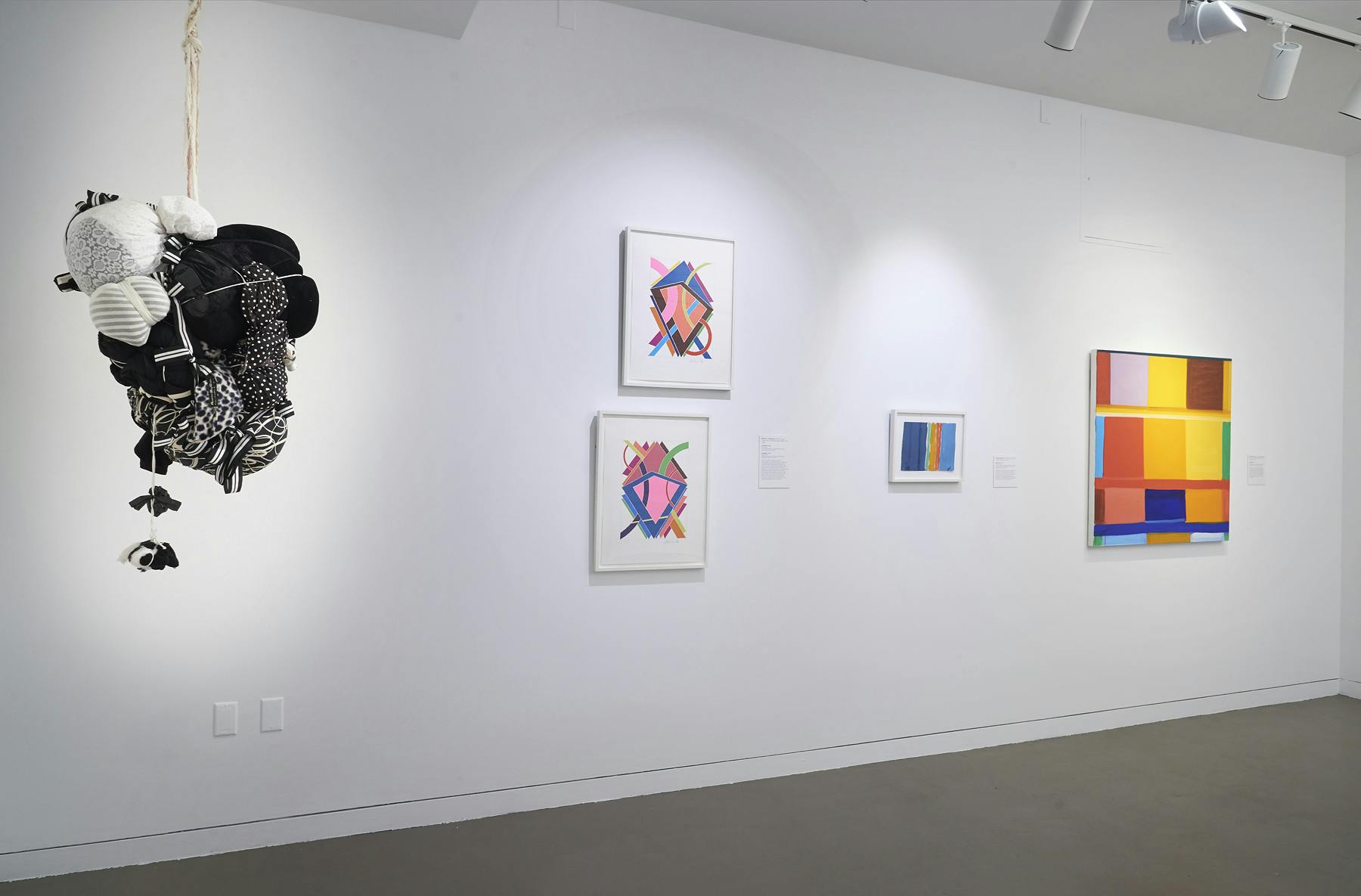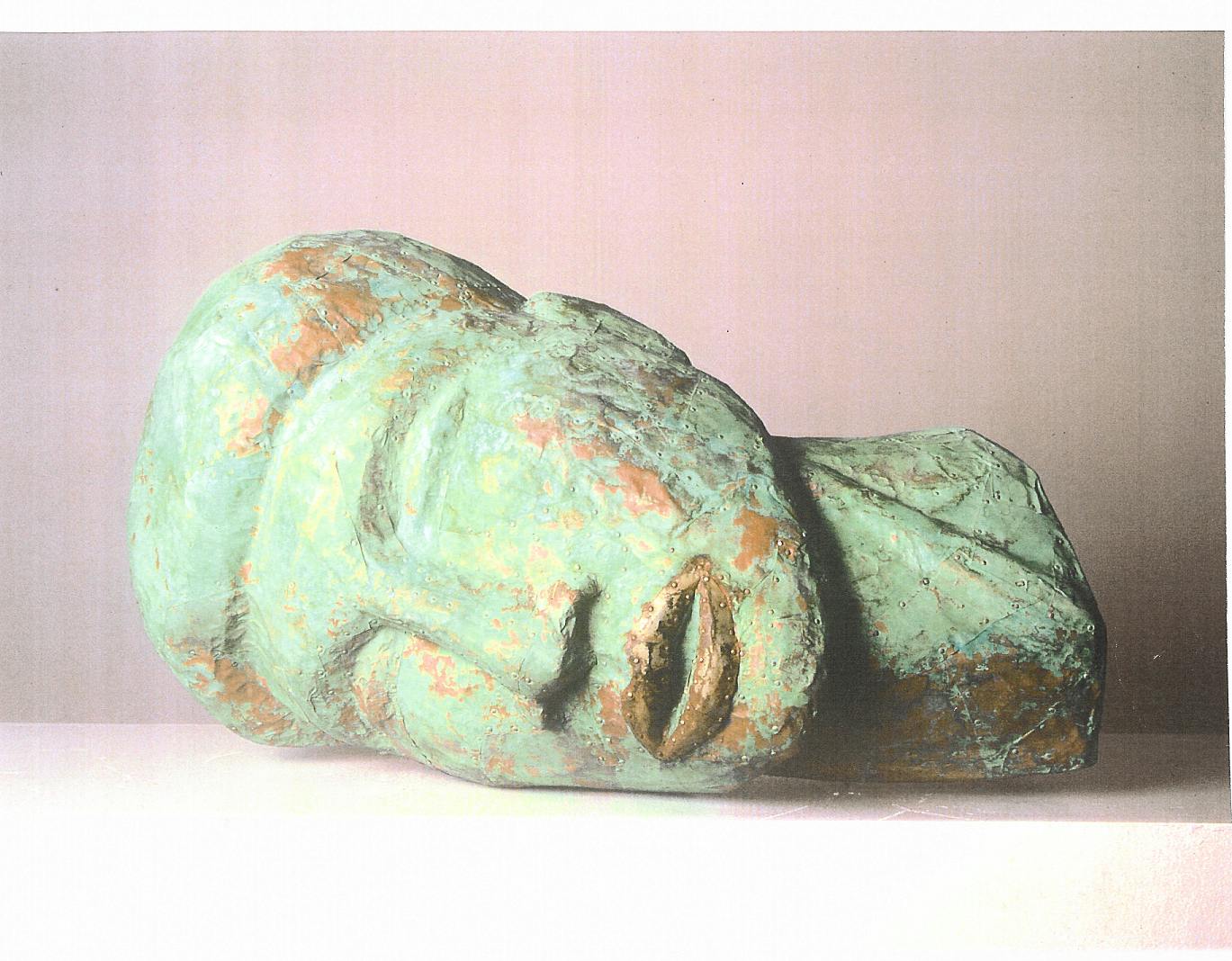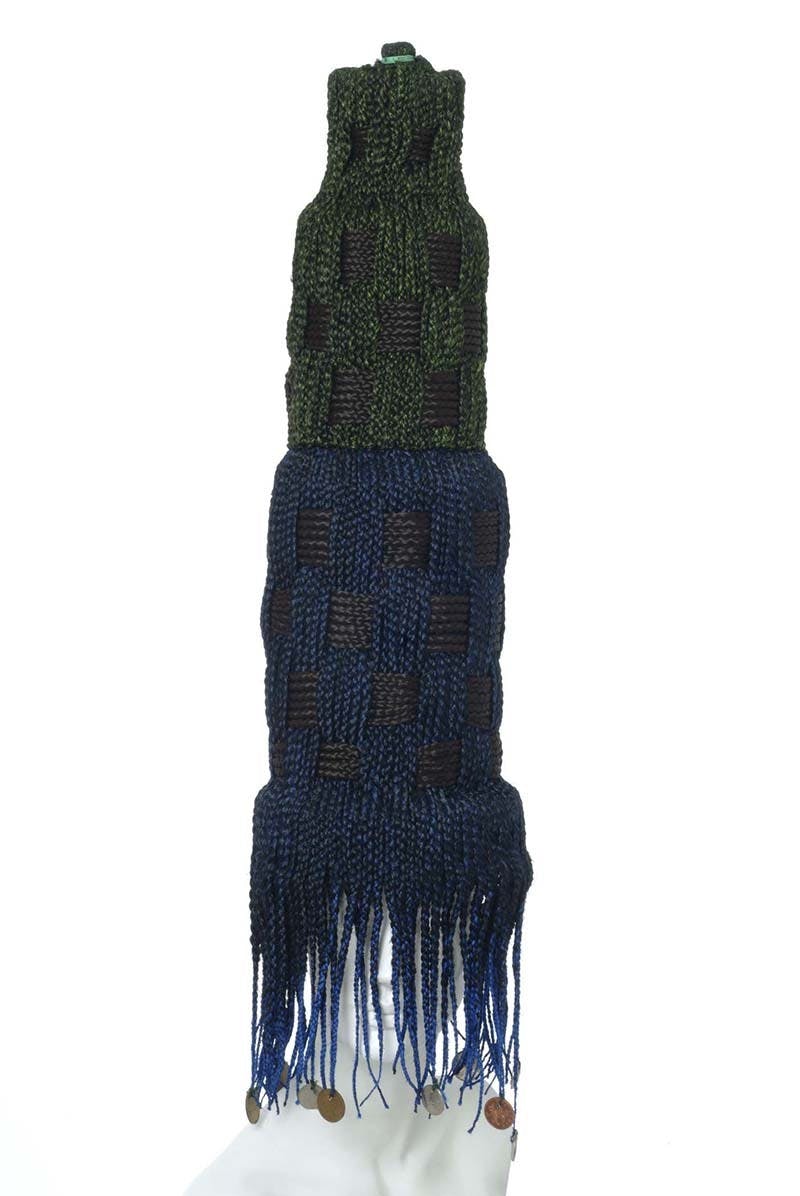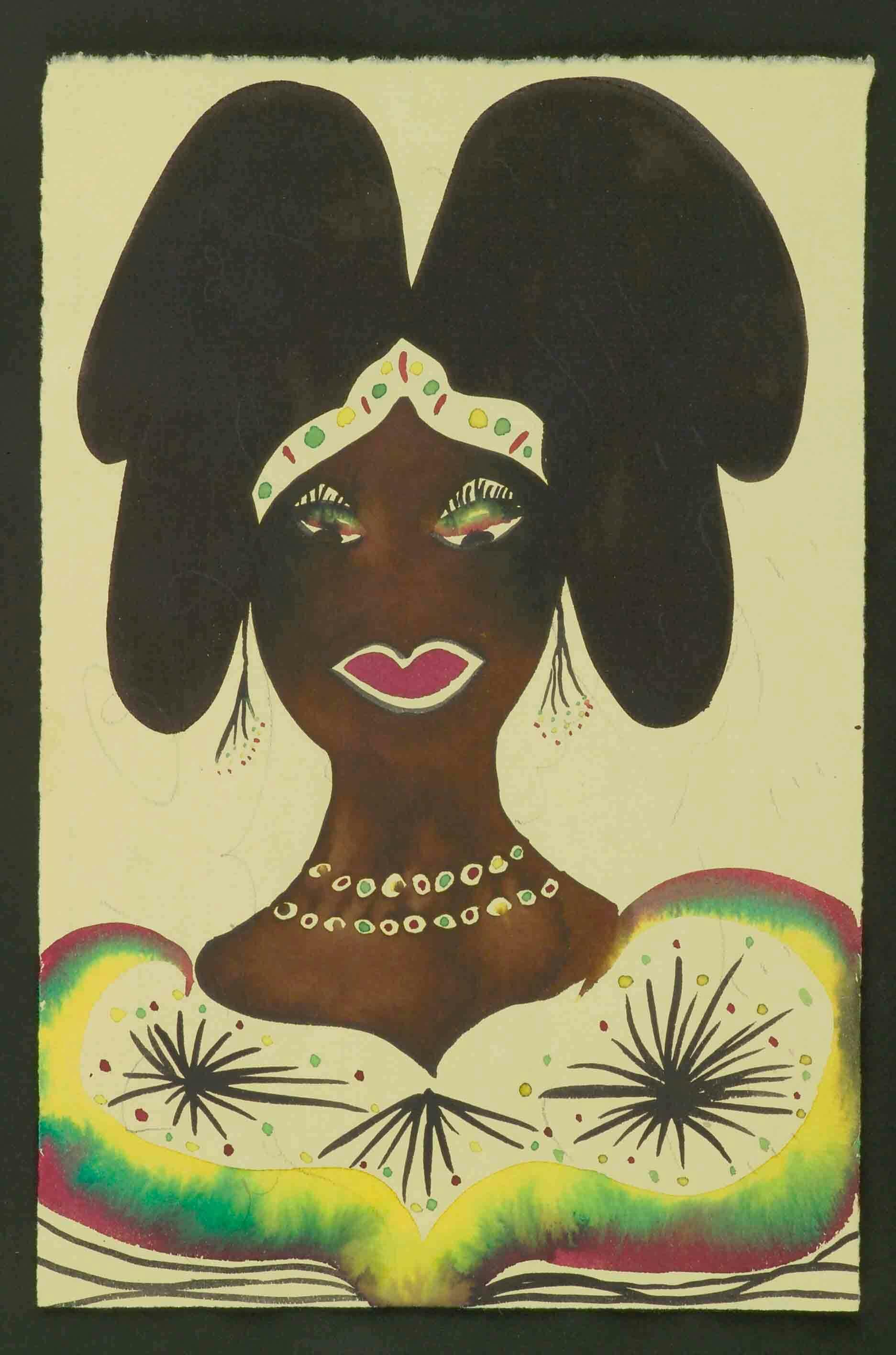Chris Ofili
(b. 1968)British artist Chris Ofili creates paintings that merge figurative and abstract traditions and reshape standard notions of beauty.
Biography
While studying at Tameside College in Greater Manchester, England, in 1988, Ofili decided to pursue painting, creating portraits of himself and imaginary Black figures.
In the mid-1990s, Ofili developed an approach to making work characterized by intensely decorative compositions employing imagery such as Catholic icons and figures from 1970s Afropop comics. His playful, multilayered compositions often feature a significant blend of resin, glitter, collage, and elephant dung. The dung first appeared in his work after he won a British Council Travel Scholarship in 1992 and traveled to Zimbabwe, a trip that significantly impacted his artistic production. Used both as material on his canvases and as a pedestal base for display, the dung links his artmaking practice to his Nigerian heritage. Influenced by artists such as Jean-Michel Basquiat and Philip Guston, Ofili also creates watercolors, sculptures, and large-scale installations.
Since moving from London to Trinidad in 2005, Ofili’s practice has evolved in approach, content, and medium. In a 2014 interview, he noted that upon moving to Trinidad, he “felt [he] was tapping into a process of looking that was slower.”1 His work has included blue paintings so dark they require prolonged looking to identify forms, depictions of semi-abstract figures that merge with one another and into nature, and sculptures that eroticize religious themes.
Ofili received his BFA from the Chelsea School of Art, London, and MFA from the Royal College of Art, London. He received the prestigious Turner Prize—the first Black artist to do so—in 1998. The Studio Museum has presented his work in exhibitions such as Chris Ofili: Afro Muses (2005); Collection in Context: Four Decades (2008); and 30 Seconds off an Inch (2009).
1) Calvin Tomkins, “Into the Unknown,” New Yorker, September 29, 2014, newyorker.com/magazine/2014/10/06/into-the-unknown.
Exhibitions and Events
Chris Ofili
(b. 1968)British artist Chris Ofili creates paintings that merge figurative and abstract traditions and reshape standard notions of beauty.
R.I.P. Stephen Lawrence 1974–1993, 2013
Biography
While studying at Tameside College in Greater Manchester, England, in 1988, Ofili decided to pursue painting, creating portraits of himself and imaginary Black figures.
In the mid-1990s, Ofili developed an approach to making work characterized by intensely decorative compositions employing imagery such as Catholic icons and figures from 1970s Afropop comics. His playful, multilayered compositions often feature a significant blend of resin, glitter, collage, and elephant dung. The dung first appeared in his work after he won a British Council Travel Scholarship in 1992 and traveled to Zimbabwe, a trip that significantly impacted his artistic production. Used both as material on his canvases and as a pedestal base for display, the dung links his artmaking practice to his Nigerian heritage. Influenced by artists such as Jean-Michel Basquiat and Philip Guston, Ofili also creates watercolors, sculptures, and large-scale installations.
Since moving from London to Trinidad in 2005, Ofili’s practice has evolved in approach, content, and medium. In a 2014 interview, he noted that upon moving to Trinidad, he “felt [he] was tapping into a process of looking that was slower.”1 His work has included blue paintings so dark they require prolonged looking to identify forms, depictions of semi-abstract figures that merge with one another and into nature, and sculptures that eroticize religious themes.
Ofili received his BFA from the Chelsea School of Art, London, and MFA from the Royal College of Art, London. He received the prestigious Turner Prize—the first Black artist to do so—in 1998. The Studio Museum has presented his work in exhibitions such as Chris Ofili: Afro Muses (2005); Collection in Context: Four Decades (2008); and 30 Seconds off an Inch (2009).
1) Calvin Tomkins, “Into the Unknown,” New Yorker, September 29, 2014, newyorker.com/magazine/2014/10/06/into-the-unknown.








